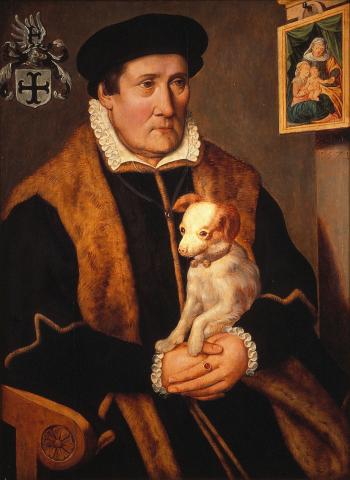Recommendation
In a letter dated 17 November 2009, the Minister for Education, Culture and Science (hereafter referred to as: the Minister) requested the Restitutions Committee (hereafter referred to as: the Committee) for advice concerning an application for restitution submitted by H.S. of P., France (hereafter referred to as: the applicant) on 14 September 2009 concerning two paintings that may have belonged to Edouard Jonas. These are Portrait of a man with a dog, anonymous, and Landscape with cattle in a shallow river by Theobald Michau, which are currently part of the Netherlands Art Property Collection in the custody of the Dutch State, under inventory numbers NK 2828 and NK 2837 (hereafter referred to as: NK collection). The paintings are currently on loan – NK 2828 to the Bonnefanten museum in Maastricht and NK 2837 to the province of Limburg [1].
[1] Text correction: NK 2837 is housed in the depot of the Netherlands Institute for Cultural Heritage
